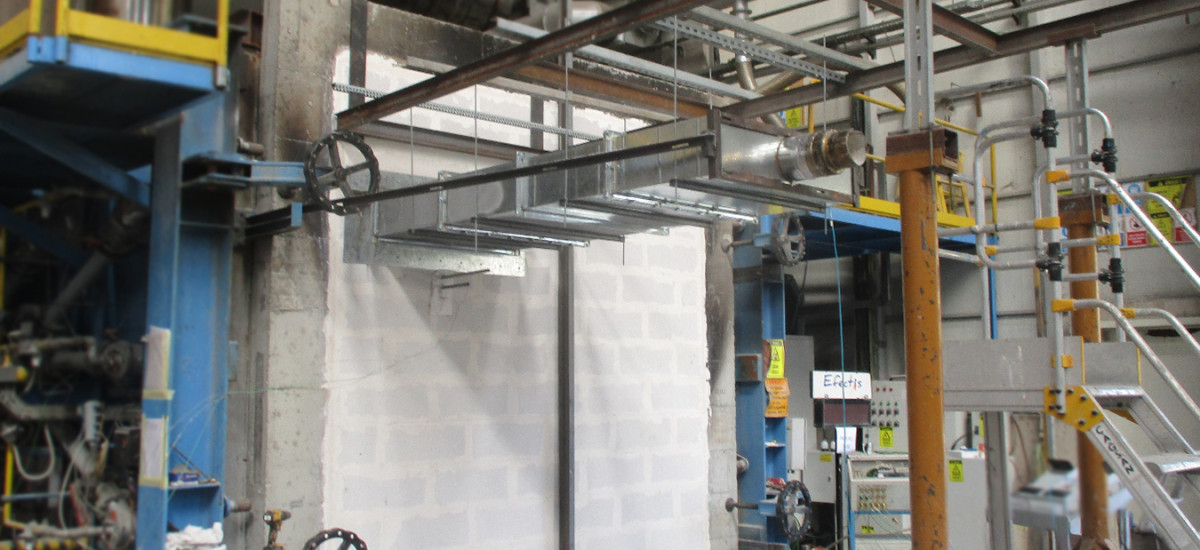10/7/2025
Introduction
EN 12101-7 is a standard applied in Europe for the design, installation, and maintenance of smoke control and ventilation systems in buildings. This standard was developed to ensure the rapid evacuation of smoke and to maintain building safety during a fire. Properly managed smoke and heat during a fire aim to allow safe evacuation of occupants and to prevent the spread of the fire.
EN 12101-7 sets out the necessary requirements and performance criteria to ensure the safe and efficient operation of smoke control systems. These systems are commonly referred to as “Heat and Smoke Ventilation Systems” (HVS), which are used to remove smoke and heat from buildings.
Objectives of EN 12101-7
The EN 12101-7 standard aims to achieve the following key goals during fire incidents:
- Containment and removal of smoke from the building.
- Safe evacuation of occupants.
- Control and suppression of fire spread.
- Preservation of the structural integrity of buildings to enhance fire safety.
To achieve these objectives, the components used in the design of heat and smoke ventilation systems must be correctly specified, positioned, and tested.
Key Concepts and Components
EN 12101-7 covers various components of smoke control systems, including:
- Smoke Ventilation Systems: Systems that safely evacuate smoke from the building. These typically consist of ventilation ducts, fans, and exhaust outlets.
- Mechanical Ventilation Systems: Used to control airflow in the building during a fire, allowing occupants to evacuate through smoke-free areas.
- Fans and Motors: Electrically operated devices that play a critical role in expelling smoke quickly from the building.
- Operable Windows and Air Outlets: Windows and vents that can be opened to allow smoke to escape are also part of the system.
Applications of EN 12101-7
EN 12101-7 can be applied to the following types of buildings:
- Residential buildings
- Office and commercial buildings
- Hospitals and healthcare facilities
- Shopping centers
- Industrial facilities
For each type of building, heat and smoke ventilation systems must be designed and implemented in accordance with the specific standards.
Performance Requirements
EN 12101-7 provides specific performance criteria to assess the effectiveness of the systems, including:
- Rapid Smoke Evacuation: Smoke must be removed from the building as quickly as possible.
- High Heat Resistance: System components must be resistant to the high temperatures associated with fires.
- Reliability: The smoke ventilation system must function reliably during a fire.
- Maintenance and Testing Requirements: Systems must be regularly maintained and tested.
Design of Smoke Control Systems
When designing smoke control systems in compliance with EN 12101-7, the following factors must be considered:
- Smoke evacuation plans tailored to building type and usage: Each building type has different fire risks and requirements.
- Proper component selection: Fans, windows, and other elements must be chosen to function effectively in the event of a fire.
- Airflow management: Airflow must be appropriately managed to ensure the rapid removal of smoke from the building.
Ensuring the accurate and complete execution of the design, testing, and certification processes required by the EN 12101-7 standard is critical for smoke control systems to deliver reliable performance during a fire. At this point, Efectis, a globally accredited fire safety authority, offers a full suite of services to validate the reliability, safety, and compliance of smoke control and heat exhaust systems.
• Testing & Certification: At Efectis laboratories, fire resistance tests for duct systems are carried out in full alignment with EN 12101-7. Upon successful testing, CE marking is granted, certifying the system’s compliance and unlocking access to European markets.
• Design Validation & Technical Consultancy: From the early project stages, Efectis supports your team with expert guidance tailored to the building type and its intended use—ensuring your smoke extraction system meets legal requirements and aligns with best-in-class fire safety strategies.
• On-Site Inspections & Performance Verification: Our team performs on-site evaluations to ensure installed systems operate as intended under EN 12101-7. This guarantees reliable real-world performance in the event of a fire—when it matters most.
• Training & Knowledge Transfer: Through dedicated training programs for project managers, installers, and technical personnel, Efectis helps build a strong fire safety culture while ensuring consistent application of the standard across your organization.
With Efectis by your side, you’re not just meeting regulation; you’re investing in trust and safety.

